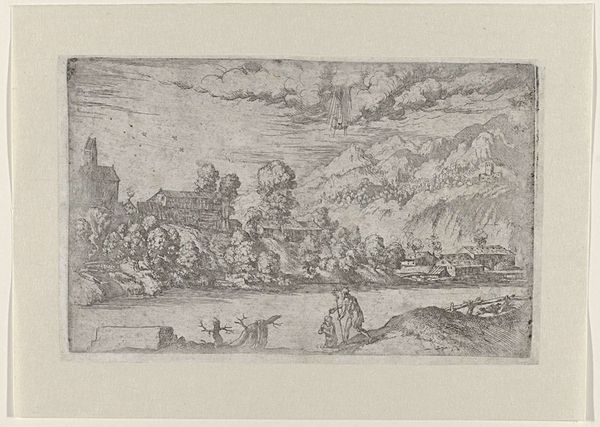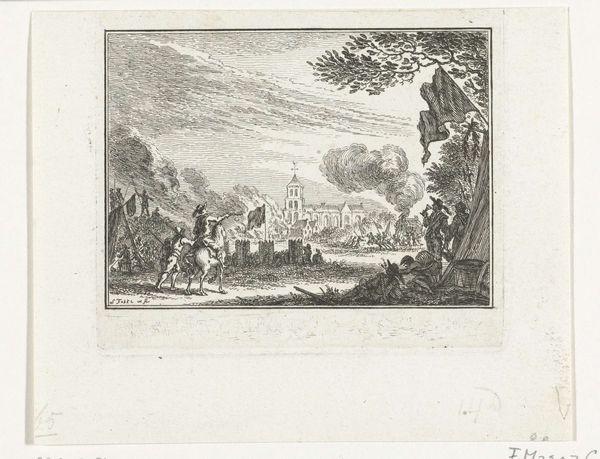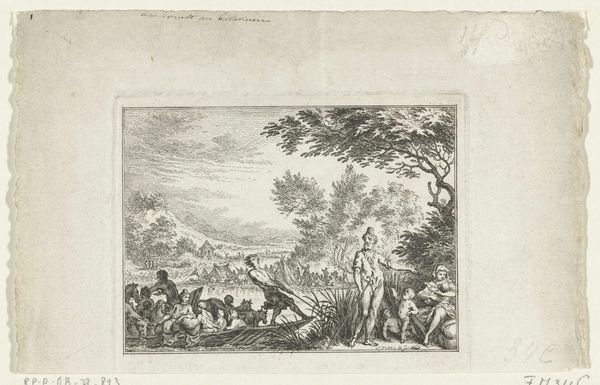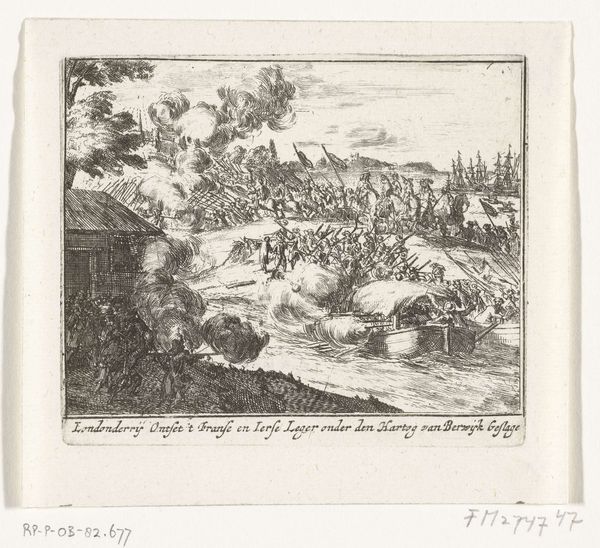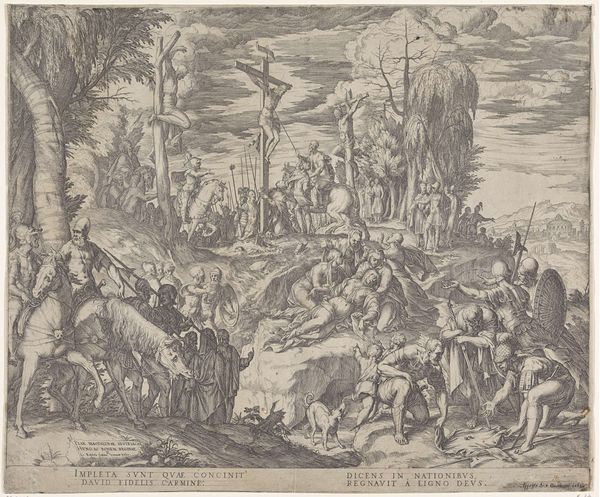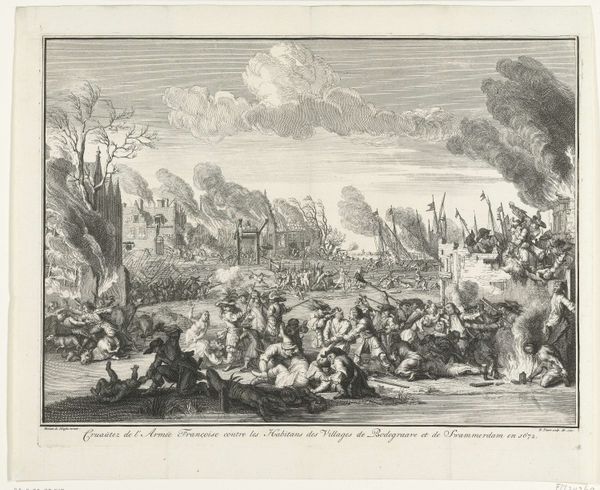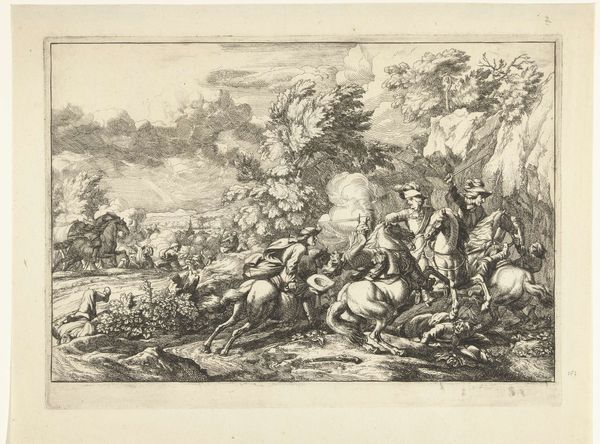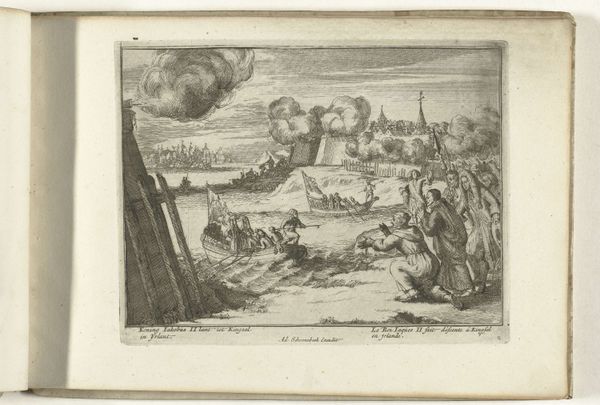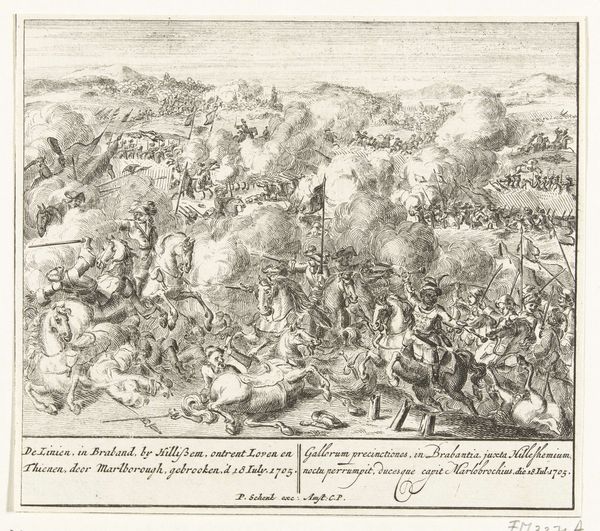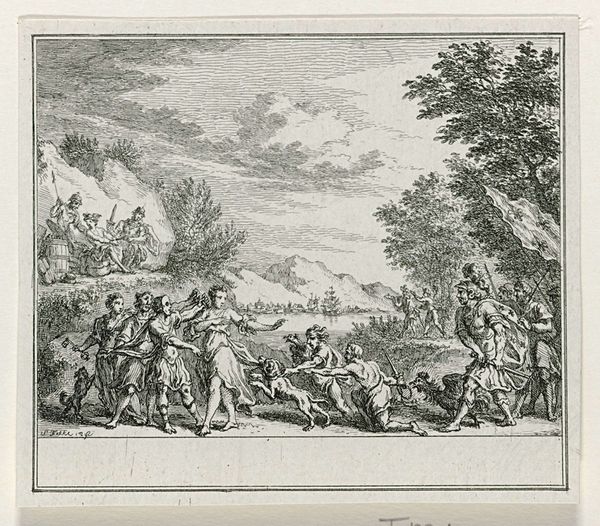
print, engraving
#
baroque
# print
#
pen illustration
#
pen sketch
#
landscape
#
personal sketchbook
#
sketchwork
#
ink drawing experimentation
#
pen-ink sketch
#
pen work
#
sketchbook drawing
#
history-painting
#
storyboard and sketchbook work
#
sketchbook art
#
engraving
Dimensions: height 92 mm, width 113 mm
Copyright: Rijks Museum: Open Domain
Editor: This engraving, “Slag bij Kaap la Hogue, 1692,” created in 1711 by an anonymous artist, captures quite a chaotic naval battle. All of the smoke makes me think of warfare and a landscape painted in death. How do you interpret this work, with all of its swirling energy and drama? Curator: Indeed, the "swirling energy" you observe speaks to the Baroque style. But look closer: these are not merely ships aflame; they are symbols of power, specifically the French fleet decimated by English and Dutch forces. Notice the recurring motif of destruction – fractured masts, sinking vessels – it signifies not just a military defeat but a rupture in the established order. Consider how visual representations like this shape cultural memory of significant historical events, almost as though these symbols replace facts and evidence. Editor: That's a great point. So the smoke and broken ships aren't just aesthetic choices, they’re visual cues meant to tell a specific story and perhaps elicit a feeling about that time? Curator: Precisely! The print serves as propaganda. Reflect on the implications. An easily reproducible engraving is distributed widely and embeds itself within the public imagination. Do you see the victorious vessels in the distance and what feelings those are meant to inspire in a Dutch or English audience? Editor: Now I see the value of symbols that transcend a simple depiction of events. Looking at this battle scene, it’s not just about what happened, but about how that moment was, and is, meant to be remembered and internalized. Curator: Exactly. It prompts us to question the narratives we inherit. What is omitted? Whose perspective is prioritized? And what end does this representation serve? It is, indeed, a powerful glimpse into cultural memory.
Comments
No comments
Be the first to comment and join the conversation on the ultimate creative platform.
